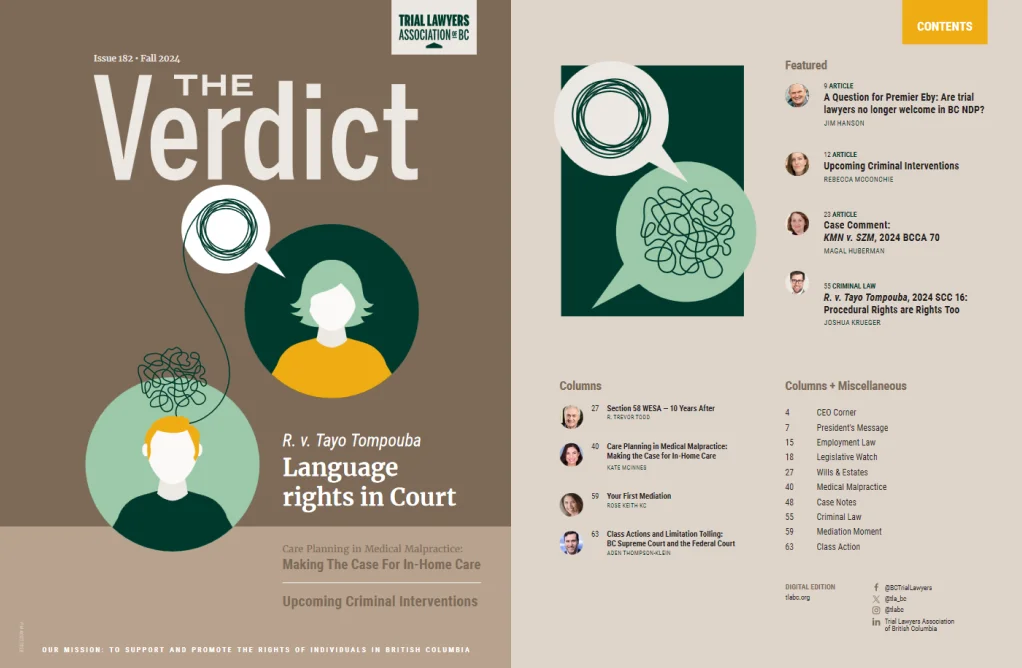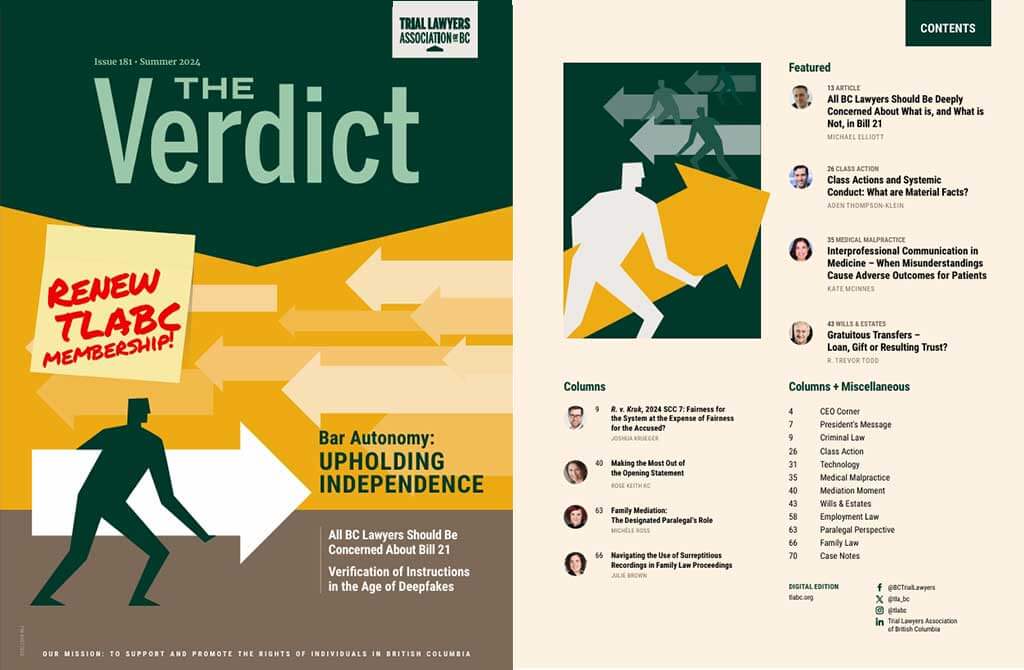
This is the final installment of our series aimed at providing a detailed examination of the challenges and pitfalls in different areas of medical negligence lawsuits, and approaches to overcoming them. Each article has focused on specific injuries and highlighted the obstacles a plaintiff faces in bringing their case to a successful conclusion. Our next series, which will debut in the Winter 2024 edition of The Verdict, will focus on practical and evidentiary issues in medical malpractice.
This article concludes our current series by considering one of the most critical and costly aspects of any medical malpractice lawsuit: the client’s care plan. It will proceed by describing the principles of autonomy, choice, and independence that underpin all cost of future care analyses, as repeatedly reiterated by the Supreme Court of Canada; flagging proposals for care that are commonly found in defence submissions and the case law, which contravene these principles; and providing specific advice on how to develop and present a care plan successfully in mediation and at trial.
Few aspects of a medical malpractice lawsuit are as important to both counsel and client as the life care plan. For plaintiff’s counsel, the care plan is the evidentiary basis for the assessment of costs of future care. When properly presented, “the life care plan can be a powerful tool of persuasion, whether persuading the defence to settle the case or persuading [the court] to award a fair amount of damages.”1 For the critically injured client and their family, who are often facing a scary and uncertain future, the care plan serves as a source of reassurance and empowerment, particularly when it is crafted with their input².
The law in Canada concerning care planning in medical negligence cases is clear and well-established. The ultimate goal of an assessment of future care costs is to ensure that the injured plaintiff is adequately cared for. Expenses that further this goal are based on what a reasonable person with ample means would incur.3
With respect to the plaintiff’s living arrangement — the focal point of every care plan, which inherently impacts the provision of all other aspects of care — courts across this country have repeatedly found that it is “difficult to conceive of any reasonably-minded person of ample means who would not be ready to incur the expense of home care.”4 Plaintiffs’ counsel need not rely solely on this case law or common sense to support the idea that any reasonable person would choose this model of care over, say, a group home: a recent survey demonstrated that 91% of all Canadians, and nearly 100% of Canadians aged 65 years or older, report that they plan on living independently for as long as possible.5

